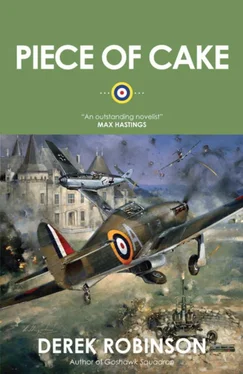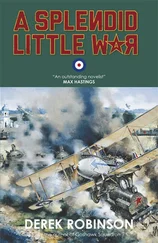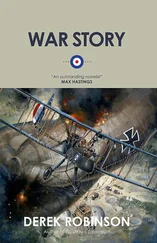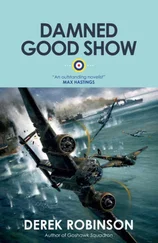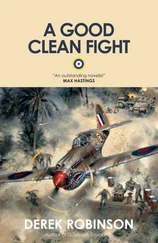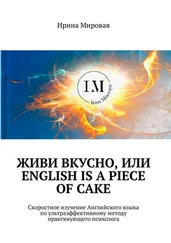By this I mean that the story is broadly true to the way the war went in 1939–40, and all the minor events are at least feasible. For example, the event I have called “the Battle of Southend Sands” is based on a confused episode known at the time as “the Battle of Barking Creek” when, on September 6, 1939, a formation of Spitfires shot down two Hurricanes, while anti-aircraft gunners destroyed a Blenheim fighter. Mistaken identity remained a constant hazard: on August 11, 1940, a Hurricane on convoy patrol was shot down by a Spitfire, and a month later No. 73 squadron lost three Hurricanes, all reportedly shot down by Spitfires (the pilots survived). Similarly, my account of the massacre of Defiants from Hawkinge is substantially accurate, as is the earlier description of the Maastricht raids.
References to aircraft performance—speeds, armaments, rate-of climb, operational ceiling, and so on—are as accurate as I could make them. Hurricane squadrons did enter the war with wooden propellers, canvas-covered wings, and no armor behind the pilot. References to tactics and combat procedures-are also based on fact. British fighter squadrons flew in tight, inflexible formations and used the cumbersome Fighting Area Attacks until well into 1940. After the fall of France, some squadron commanders changed their tactics, opened their formations, and flew in pairs, like the Luftwaffe; but many others persisted with the obsolete textbook approach. As Air Vice-Marshal Johnnie Johnson has said: “These formation attacks… were useless for air fighting” because “the tempo of air combat did not allow time for elaborate manoeuvers in tight formation” and as a result “the last words too many splendid fighter pilots heard were ‘Number… Attack, go.’” ( Full Circle , pp. 118–19) Moreover, aircraft in tight formation were always vulnerable to getting bounced from behind. “Ass-end Charlie” was indeed a dangerous position: the fate of Nugent and McPhee was not uncommon.
Several American pilots served in the RAF. Biggin Hill’s first kill of the war—a Dornier 17—was shared by an American flying officer, Jimmy Davies, and a British flight-sergeant, Brown, on November 21, 1939. By June 1940 Davies was a flight lieutenant credited with six kills: he died in combat on the day he was to be awarded the DFC. At least seven Americans flew with Fighter Command in the Battle; of these, six were killed later in the war.
Although September 15th is now celebrated as Battle of Britain Day, the massive German raid that forms the climax of Piece of Cake actually took place a week earlier, on Saturday, September 7th, 1940, when the Luftwaffe sent a thousand aircraft against London. This was really the turning-point of the battle. As Group Captain Peter Townsend (then a squadron leader in command of 85 Squadron) was to write: “On 6th September victory was within the Luftwaffe’s grasp.” In 11 Group, defending southeast England, six out of seven Sector airfields and five advanced airfields had been severely damaged. Fighter reserves were at an all-time low. The output of new pilots—hastily trained though they were—lagged behind losses. In the words of 11 Group’s commander, Air Vice-Marshal Keith Park: “…an almost complete disorganisation of the defence system made the control of our fighter squadrons extremely difficult… Had the enemy continued his heavy attacks [against airfields and the control system]… the fighter defences of London would have been in a perilous state.” Instead, on September 7th, Germany switched targets and attacked the capital itself. The RAF pilots intercepting that vast formation could not know it, but the Luftwaffe had made a fatal mistake. Fighter Command was given time to recover and it was never again seriously threatened.
One small point: I have not used the word “radar” in Piece of Cake. At that time, radar was called “RDF” more often, secrecy was such that it was not referred to at all. Another small point: British fighters carried cine-guns both during and after the Battle. As late as the Dieppe Raid of 1942, analysis of film taken by these cameras revealed the average fighter pilot’s low standard of gunnery.
On two occasions in the story, the views of Air Chief Marshal Dowding, C-in-C Fighter Command, are quoted: once when Rex describes the “Dowding Spread” and once when he comments on the “long-burst-long-range” attack. These references are based on Dowding’s own statements. Dowding had no faith in close-range attacks. At a meeting of the Gun Sub-Committee of the Air Fighting Committee held on July 5, 1939, Dowding insisted that “it was by no means axiomatic that the closer they [the fighters] got to the bomber the more bullets would hit it.” Others disagreed; nevertheless the recommended range for opening fire (and therefore for harmonizing guns) was agreed to be 400 yards.
This meeting also discussed German Air Force involvement in the Spanish Civil War. In April 1939 an Air Staff officer had gone to France to interview Spanish Republican pilots in exile. They strongly emphasized the skill of German pilots, the destructive powers of the cannon-armed Me-109, and above all the absolute necessity for back armor. Dowding’s meeting was also told that Messerschmitt pilots used cannonfire at long range but they came in close—200 meters for light-machine-gun fire. “This was noted… ‘say the minutes,’ but it was generally agreed to be unwise to base any very definite conclusions on this report, as the conditions of air warfare in Spain were unlikely to prevail in a general European war.” On the whole the RA Fignored the lessons that the Condor Legion taught the Luftwaffe.
I have tried, in Piece of Cake , to paint a fair and honest picture of a squadron in RAF Fighter Command in the first twelve months of the war. The popular image of those men represents them as invariably gallant, brilliant and indefatigable, rather like Churchill’s famous description in August 1940: “…undaunted by odds, unwearied in their constant challenge and mortal danger…” This was good backs-to-the-wall rhetoric but it gave a false impression of the way the Battle went. In reality there were times when pilots were daunted by the overwhelming odds they faced day after day; and far from being unwearied they were often at the point of exhaustion. Which brings me to the controversial matter of claims.
After the war it was accepted that RAF claims during the Battle had been far too high. Indeed they were challenged, during the “Battle,” by the American press. American newspapermen refused to believe that the RAF was shooting down all the German planes it claimed. On August 17, 1940, Churchill showed that he too was not entirely happy: he inquired how many German aircraft had crashed on British soil during a recent day’s fighting, and he asked Dowding what proportion of that fighting was over land. “This,” Churchill wrote, “would afford a good means of establishing for our own satisfaction the results which we claimed.” Dowding replied that there had been eleven fights over land and eleven over the sea. “If the total day’s bag was 180,” he said, “we might expect to pick up 90 on land.”
Evidently Churchill was not satisfied. On August 29, 1940, he called for another check: a tally of German aircrew taken prisoner. He asked: “How does this square with our claims of German aircraft destroyed over Britain?” I couldn’t trace a reply to this, but a few days later Dowding submitted an analysis of enemy losses in the period August 11–August 24th. In all, Fighter Command claimed 636 enemy aircraft destroyed. However only 113 of these had come down on land. Where were the others? Fighter Command said they were in the sea—most of them, anyway.
Читать дальше
